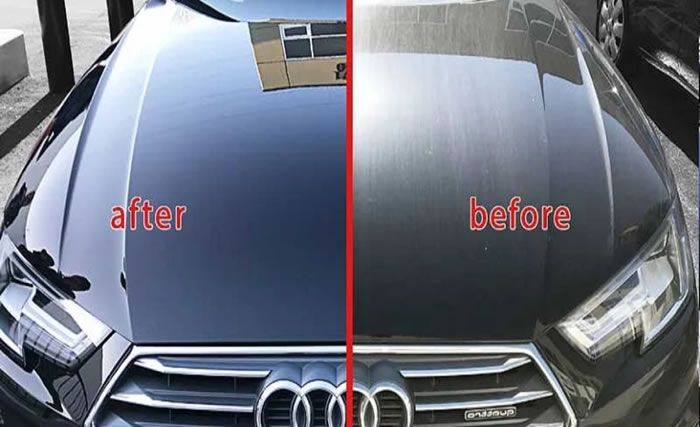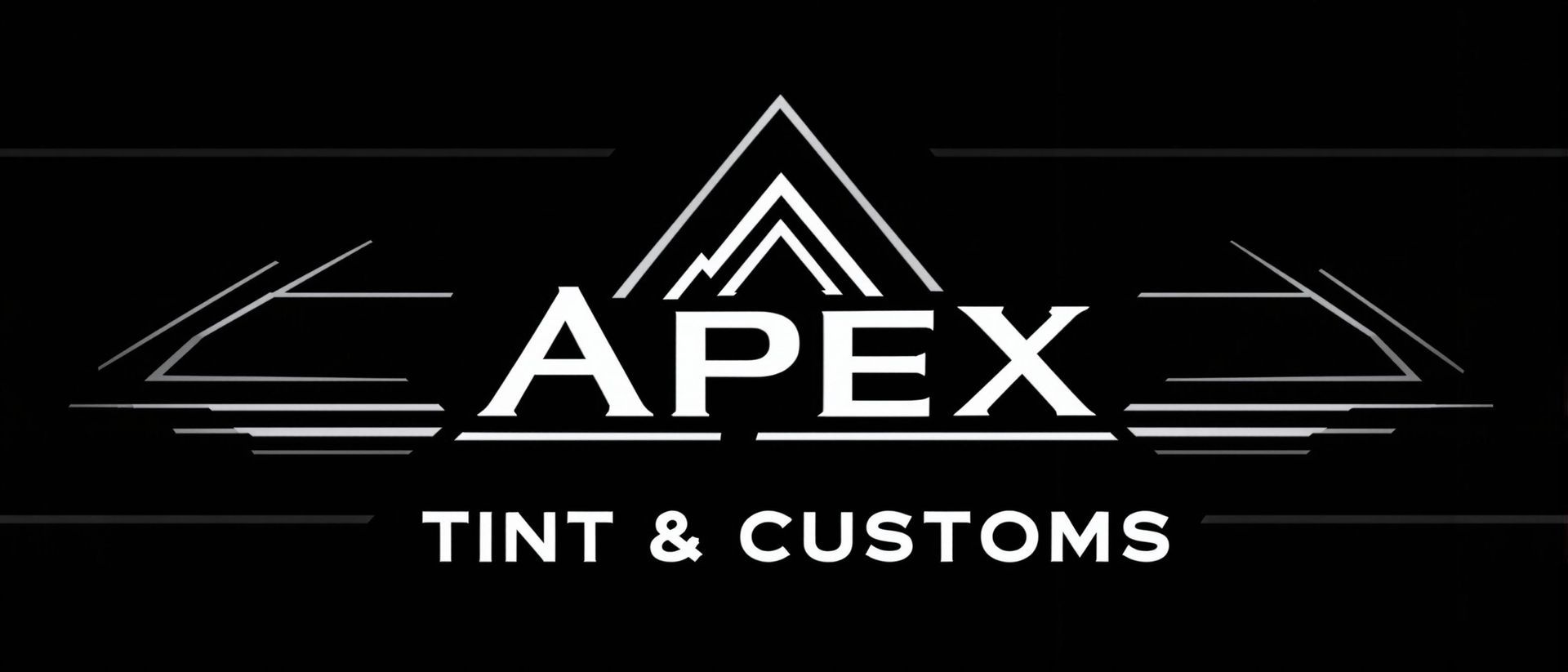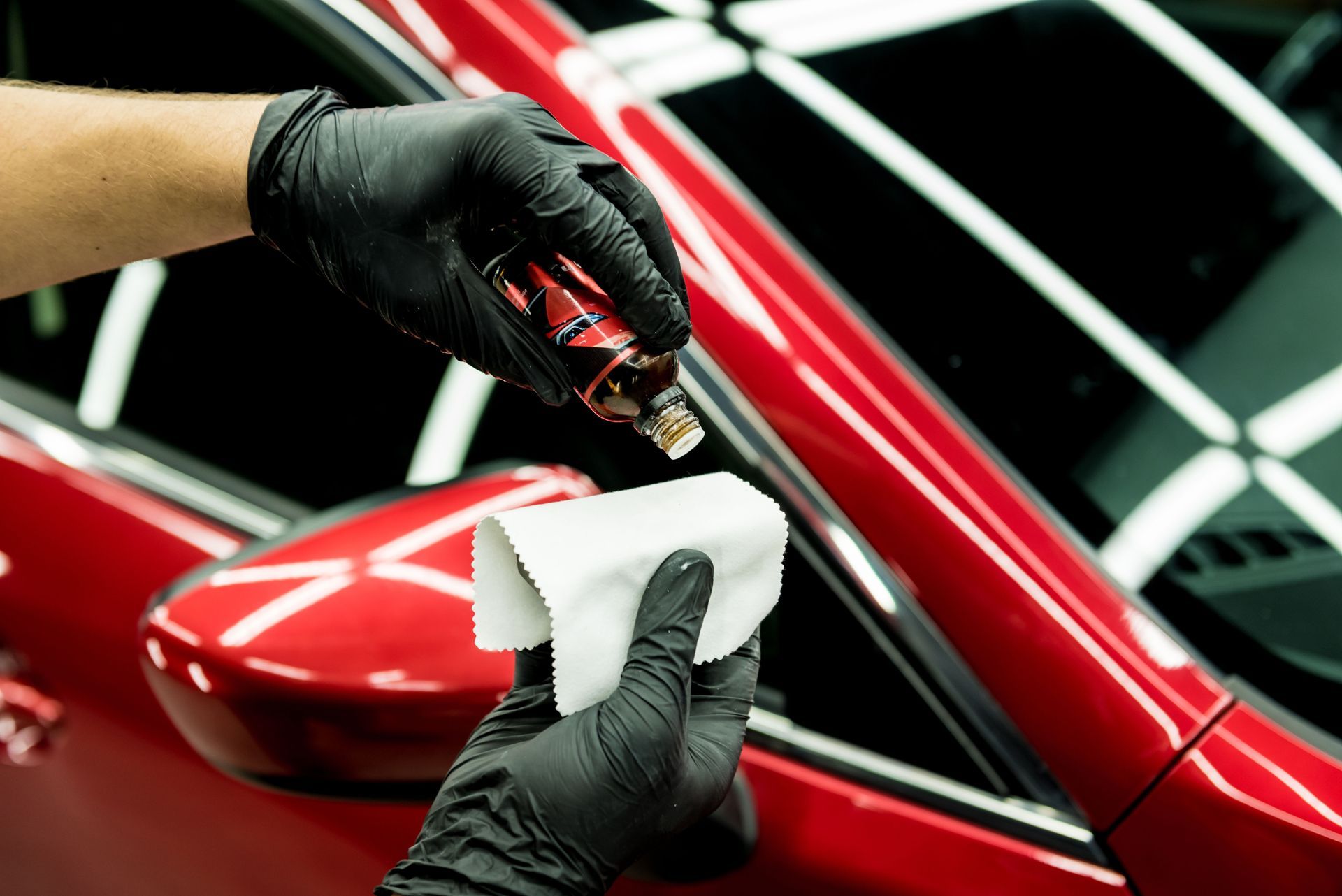Please Leave Us A Google Review
11513 Lebanon Rd,
Mt. Juliet, TN 37122
(Behind the bicycle shop, next to Burger King)
Blog Layout
ceramic vs Nano Ceramic
7072081175 • March 9, 2025
Ceramic VS Nano Ceramic tint

# Ceramic Tint vs. Nano Ceramic Tint: Understanding the Differences
When it comes to window tinting, two popular options that often come up are ceramic tint and nano ceramic tint. While both types offer significant benefits, they differ in technology, performance, and application. In this blog, we will delve into the key differences between ceramic tint and nano ceramic tint, helping you make an informed choice for your vehicle or home.
## What is Ceramic Tint?
Ceramic tint is a type of window film that incorporates ceramic particles into its composition. These particles are non-metallic and non-conductive, which allows the tint to block harmful UV rays and reduce heat without interfering with electronic signals. Ceramic tint is known for its durability, scratch resistance, and ability to maintain clarity over time.
### Key Features of Ceramic Tint:
- **UV Protection**: Blocks up to 99% of harmful UV rays, protecting your skin and interior.
- **Heat Rejection**: Provides moderate heat rejection, helping to keep your vehicle or home cooler.
- **Visibility**: Offers good visibility while maintaining privacy.
- **Durability**: Resistant to fading and scratches, ensuring longevity.
- **Infrared Rejection**: Typically blocks around 30-50% of infrared rays, which contribute to heat buildup inside the vehicle.
## What is Nano Ceramic Tint?
Nano ceramic tint is an advanced version of ceramic tint that utilizes cutting-edge nano-technology. This technology creates even smaller ceramic particles, enhancing the film's performance. Nano ceramic tint is designed to provide superior heat rejection and UV protection while maintaining excellent clarity and visibility.
### Key Features of Nano Ceramic Tint:
- **Superior UV Protection**: Blocks up to 99% of UV rays, similar to regular ceramic tint.
- **Enhanced Heat Rejection**: Offers higher heat rejection rates, keeping interiors significantly cooler.
- **Signal Clarity**: Does not interfere with electronic signals, making it ideal for vehicles with advanced technology.
- **Clarity and Visibility**: Maintains excellent optical clarity, reducing distortion.
- **Infrared Rejection**: Blocks a higher percentage of infrared rays, often exceeding 50%, which significantly reduces heat buildup and enhances comfort.
## Key Differences Between Ceramic Tint and Nano Ceramic Tint
### 1. **Heat Rejection**
One of the most significant differences between ceramic tint and nano ceramic tint is their heat rejection capabilities. Nano ceramic tint typically offers superior heat rejection, which can lead to a more comfortable interior temperature and reduced reliance on air conditioning. While regular ceramic tint may block around 50-80% of infrared rays, nano ceramic tint can block over 90%, making it more effective in keeping interiors cool.
### 2. **Optical Clarity**
While both types of tint provide good visibility, nano ceramic tint is known for its enhanced optical clarity. This means that it minimizes distortion and allows for a clearer view, which is especially important for drivers. The advanced technology used in nano ceramic tint ensures that it maintains clarity even in varying light conditions.
### 3. **Durability and Longevity**
Both ceramic and nano ceramic tints are durable, but nano ceramic tint often boasts improved scratch resistance and longevity due to its advanced technology. This can result in a longer-lasting product that maintains its appearance over time, even in harsh weather conditions.
### 4. **Cost**
Nano ceramic tint is generally more expensive than regular ceramic tint. The advanced technology and materials used in nano ceramic tint contribute to its higher price point. However, many users find the investment worthwhile for the added benefits, especially in terms of comfort and protection.
### 5. **Installation**
Both types of tint require professional installation for optimal results. However, the installation process for nano ceramic tint may require more expertise due to its advanced properties and the need for precise application. Ensuring proper installation is crucial for maximizing the benefits of either type of tint.
## Conclusion
Choosing between ceramic tint and nano ceramic tint ultimately depends on your specific needs, preferences, and budget. If you prioritize superior heat rejection, clarity, and advanced technology, nano ceramic tint may be the better option for you. On the other hand, if you are looking for a more budget-friendly solution that still offers good UV protection and durability, ceramic tint is a solid choice.
Regardless of your decision, both types of tint can enhance your comfort and protect your interiors from harmful UV rays and heat. Be sure to consult with a professional installer to determine the best option for your vehicle or home, ensuring you get the most out of your investment in window tinting.

By 7072081175
•
January 6, 2025
Why You Should Consider Ceramic and Graphene Coatings for Your Car in Winter When you think of vehicle protection products, you might automatically associate them with hot summer months — protecting your car from sun damage, heat, and those harsh UV rays. However, the colder, harsher winter months are just as important for maintaining your car’s appearance and condition. In fact, the benefits of applying both ceramic and graphene coatings during the winter season can be game-changing. Here’s why these advanced coatings are worth considering for your vehicle, no matter the time of year. 1. Protection Against Road Salt and Harsh Chemicals Winter brings a host of challenges, especially in areas where roads are salted or treated with other chemicals to prevent ice buildup. These harsh substances can cause corrosion and damage to your vehicle’s paintwork. While you may not always notice the damage immediately, over time, salt and chemicals can eat away at your car’s surface, leading to rust and deterioration. Ceramic and graphene coatings create a strong hydrophobic layer on your vehicle's surface, making it far more resistant to these corrosive elements. The coatings act as a protective barrier, preventing salt, dirt, and chemical buildup from sticking to your paint and wheels. When water, snow, and slush hit your car’s surface, they’ll bead off easily, minimizing the risk of long-term damage from these winter elements. 2. Enhanced Hydrophobic Properties for Snow and Rain Driving in winter often means dealing with wet, snowy, or rainy conditions. This can not only reduce visibility, but the accumulation of water on your car’s surface can also create challenges for cleaning. This is where the hydrophobic nature of ceramic and graphene coatings really shines. Both coatings repel water, causing it to bead up and roll off the surface. This is a huge advantage during winter months when wet conditions can lead to streaks, dirt buildup, and a constant need to clean your car. With ceramic and graphene coatings, water won’t stick as easily, keeping your car looking cleaner for longer and making the winter washings a breeze. This means less effort spent scrubbing and more time enjoying the drive. 3. Superior Scratch and Stain Resistance Winter driving often comes with challenges like ice scraping, snow accumulation, and dirt, all of which can lead to surface scratches and stains. Whether it's the ice scraper you use on your windshield or debris being kicked up from the road, your car’s finish is constantly at risk. Both ceramic and graphene coatings provide a layer of protection that strengthens the vehicle’s paint. The coatings form a tough, durable shield against minor abrasions, reducing the likelihood of scratching when cleaning your car or when snow and ice come into contact with the surface. This added protection helps maintain the sleek, shiny finish of your car, even after exposure to harsh winter elements. 4. Improved Visibility and Driving Safety One often-overlooked benefit of both ceramic and graphene coatings in the winter is their impact on your vehicle's windshield and windows. The hydrophobic properties of these coatings don’t just work on your car’s body — they also apply to your windows. When your windshield is coated with a hydrophobic layer, snow, ice, and rain slide off more easily, which improves visibility during winter driving. Furthermore, with less water and ice buildup, your windshield wipers will have to work less hard to clear away moisture, reducing wear on the wipers and preventing streaks. This means safer driving, as you’ll have a clearer view of the road in all types of weather. 5. Easier Cleaning and Maintenance One of the most tedious tasks of winter car ownership is dealing with the aftermath of snow, slush, and road grime. Cars can quickly become dirty, making frequent washes necessary. However, both ceramic and graphene coatings reduce the adhesion of dirt and contaminants to your vehicle’s surface, meaning it stays cleaner longer. These coatings create a slick surface that prevents dirt, grime, and even bird droppings from sticking. In the winter, this translates to fewer washes and less scrubbing to keep your car looking its best. If snow or mud does stick, it can be easily rinsed off without too much effort. This makes the overall maintenance of your car much more manageable, even in the harshest conditions. 6. Long-Term Durability and Cost Savings While the initial cost of applying ceramic or graphene coatings might seem like a hefty investment, the long-term benefits far outweigh the price. These coatings last for months (or even years, depending on the type) and provide lasting protection against the elements. By keeping your car protected from salt, moisture, and dirt, you’ll reduce the need for frequent paint touch-ups, waxing, and detailing, ultimately saving money on maintenance and repairs. Additionally, the coatings help maintain the resale value of your vehicle by keeping the exterior in pristine condition. The longer your car stays looking new, the better its value when it comes time to trade it in or sell. 7. Resistance to UV Damage (Even in Winter) While winter sun might not seem as intense as summer’s, it still emits harmful UV rays that can cause paint to fade and degrade over time. This is especially true in areas with snow, where UV rays can be reflected off the surface and intensify the impact on your vehicle. Ceramic and graphene coatings provide a strong shield against UV rays, helping prevent your car’s paint from oxidizing, fading, or becoming dull over time. The protection these coatings offer ensures your vehicle’s finish remains vibrant and glossy throughout the winter, preserving that “new car” look much longer. Conclusion: Winter Is the Perfect Time for Ceramic and Graphene Coatings Winter driving presents a unique set of challenges, from snow and ice to salt and road grime. However, with the protection offered by ceramic and graphene coatings, your vehicle can endure these harsh conditions while maintaining its appearance and performance. These advanced coatings provide superior protection against corrosion, improve visibility, reduce cleaning time, and extend the life of your car’s paintwork. Rather than waiting for the warmer months, consider getting a ceramic or graphene coating in the winter — your car will thank you for it, and you’ll enjoy a cleaner, safer, and better-looking ride no matter what the season throws at you.

By 7072081175
•
January 6, 2025
Why Ceramic Window Tint is Still a Smart Choice in Winter When most people think of window tinting, their minds immediately go to summer, with thoughts of keeping the sun’s blazing heat at bay. It's easy to see why — on hot days, tinted windows block out sunlight, reduce glare, and help keep the car cooler. However, ceramic window tint offers more than just comfort during the hot months, and it’s just as beneficial — if not more — during the colder winter months. Here’s why ceramic tint remains a great investment all year round: 1. Heat Insulation for Cold Days Winter might bring colder weather, but it doesn't mean ceramic window tint stops working its magic. Ceramic tint is known for its exceptional heat insulation properties, which help retain the warmth inside your car, even on the chilliest days. While it’s great for blocking solar heat in the summer, ceramic tint is also effective at trapping heat inside during winter. This can help you maintain a cozy interior without cranking up your vehicle's heater, ultimately saving fuel and energy. 2. Enhanced Comfort Without Compromise In winter, you want to enjoy comfort without having to deal with the discomfort of glare or excessive sunlight peeking through your windows on clear, sunny days. Even in winter, the sun’s rays can be bright and cause glare, especially when driving in snow, which reflects sunlight. Ceramic window tint reduces glare significantly, making driving more comfortable and less straining on the eyes. No matter the season, glare can be just as bothersome, so having the right tint is always a win. 3. Protect Your Upholstery from Fading UV rays don’t take a winter break. In fact, they can still penetrate clouds and glass, causing long-term damage to your car's interior. Over time, sunlight fades and cracks leather, fabric, and dashboard materials, leading to premature wear and tear. Ceramic window tint blocks up to 99% of harmful UV rays, helping protect your upholstery from fading and deterioration. This is especially crucial in winter when you may have your car parked outside for longer periods and the sun, though weaker, still plays a role in damaging your interior. 4. Improved Privacy and Security During winter months, your vehicle might be parked for extended hours while you’re inside, whether you're at home, work, or shopping. With ceramic window tint, you’ll have a layer of added privacy, which can deter potential thieves from seeing what’s inside your car. The darker tint ensures prying eyes are kept out, offering peace of mind that your belongings are hidden from view. Additionally, ceramic tint adds an extra layer of protection to your windows, as it holds shattered glass together in case of an accident or attempted break-in. 5. Better Visibility with Reduced Glare Even in winter, driving conditions can be tricky. Snow, icy roads, and cloudy weather can lead to moments of reduced visibility. Ceramic window tint helps reduce glare from reflective surfaces, such as snow or wet roads, which are common in winter months. By blocking out unwanted glare, you’ll experience better visibility, which means safer driving for you and your passengers. 6. Long-Term Durability One of the key advantages of ceramic window tint is its durability. Unlike dyed or metalized tints, ceramic tint doesn’t fade over time, which means it will continue to perform at its peak even after years of use. Whether it's the extreme summer heat or the cold winter air, ceramic tint is built to withstand all weather conditions, making it a smart investment for long-term benefits. 7. Enhanced Energy Efficiency Another lesser-known benefit of ceramic window tint is its ability to improve the overall energy efficiency of your vehicle. In winter, this means reducing the strain on your heating system by keeping the warmth inside. On the flip side, in summer, it’ll reduce the demand on your air conditioning. This can translate to better fuel efficiency, saving you money on energy costs over time, no matter the season. Conclusion: Year-Round Benefits Ceramic window tint is a fantastic upgrade for your vehicle, no matter the season. While it’s often associated with summer heat reduction, its winter benefits — such as improved insulation, reduced glare, UV protection, and enhanced privacy — make it a wise choice year-round. Investing in ceramic tint ensures your vehicle stays comfortable, protected, and efficient, no matter what the weather brings. So, don’t wait for summer to consider ceramic tint — it's a smart choice for every season.
Visit Us
,
This is a placeholder for the Yext Knolwedge Tags. This message will not appear on the live site, but only within the editor. The Yext Knowledge Tags are successfully installed and will be added to the website.
Contact Us
This is a placeholder for the Yext Knolwedge Tags. This message will not appear on the live site, but only within the editor. The Yext Knowledge Tags are successfully installed and will be added to the website.
Business Hours
This is a placeholder for the Yext Knolwedge Tags. This message will not appear on the live site, but only within the editor. The Yext Knowledge Tags are successfully installed and will be added to the website.
Privacy Policy
| Do Not Share My Information
| Conditions of Use
| Notice and Take Down Policy
| Website Accessibility Policy
© 2025
The content on this website is owned by us and our licensors. Do not copy any content (including images) without our consent.








